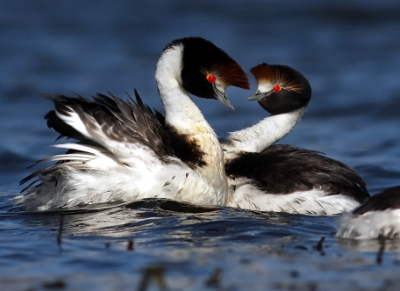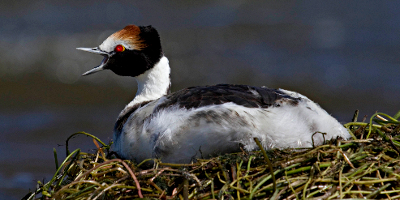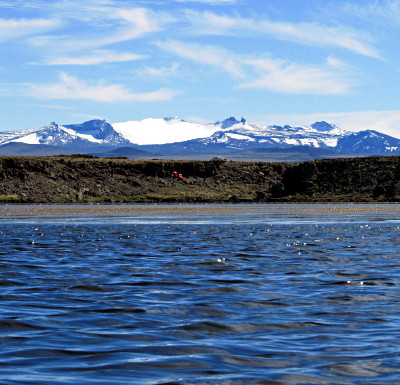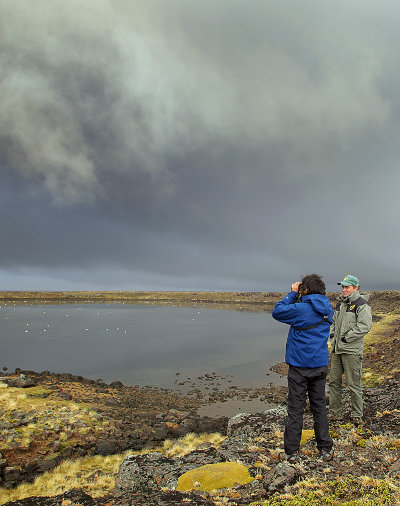by Ignacio Roesler
The Hooded Grebe (Podiceps gallardoi) has experienced an alarming population decline of approximately 80% over the past 30 years, resulting in its classification as 'Critically Endangered' by BirdLife International (2024). This species is endemic to Santa Cruz, Argentina, where it nests in high-altitude lagoons and migrates to Atlantic coast estuaries during the winter. Our research over the past 15 years, conducted under the Programa Patagonia of Aves Argentinas, has identified several key threats contributing to the species' decline. Abiotic factors include lagoon acidification, desertification-induced loss of nesting habitats, and habitat destruction from strong winds and volcanic activity. Biotic factors involve predation by Mediterranean gulls, competition for food with exotic salmonids, and predation by the American mink. To address these challenges, we are focusing on enhancing our understanding of the Hooded Grebe’s reproductive biology and life cycle, particularly its dispersal and migration patterns. Additionally, we are implementing management strategies to improve reproductive success and survival rates. These efforts include predator control initiatives, led by M. Malerba as part of their doctoral research, and ex-situ breeding programs, coordinated by G. Gabarain's doctoral project.
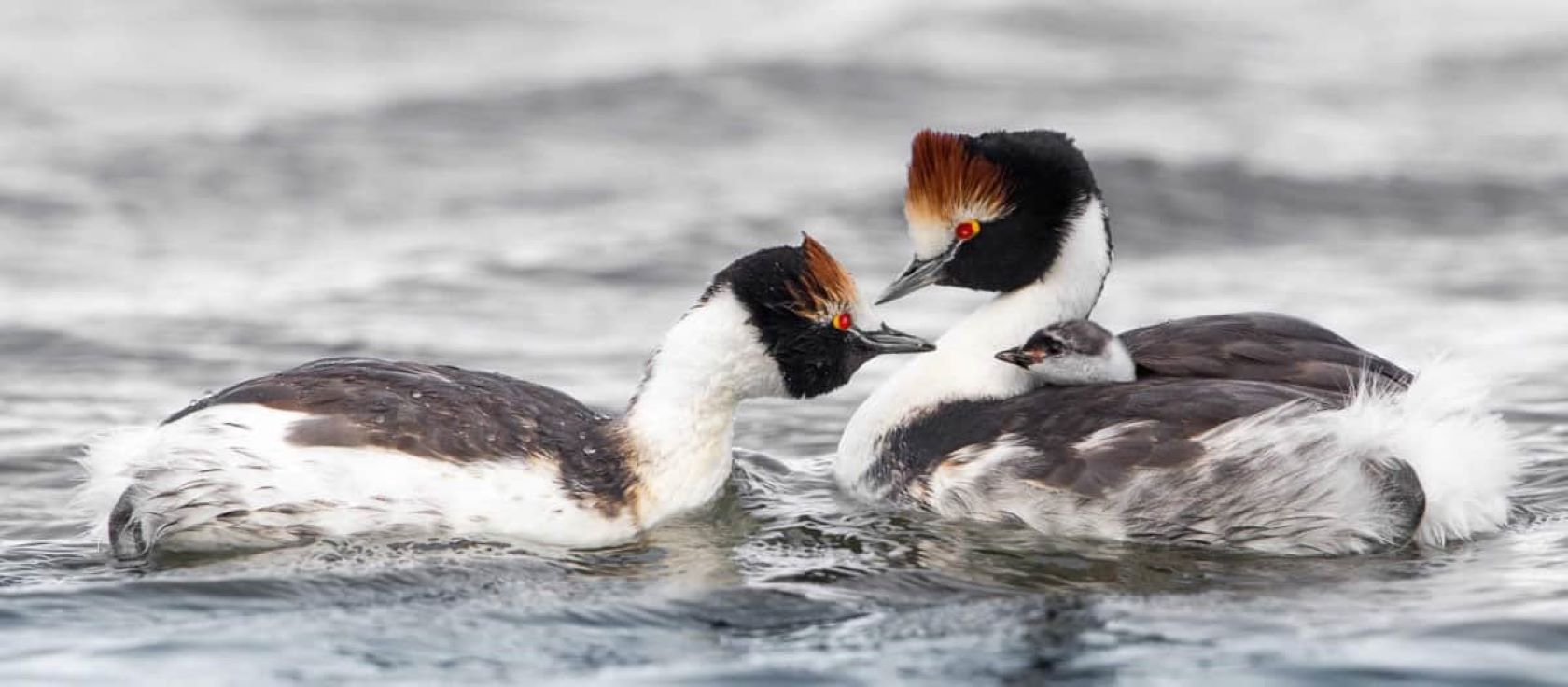
Parental care of the Hooded greebe (I. Roesler).
Related publications
Lancelotti J, Pessacg NL, Roesler I & Pascual MA. Climate variability and trends in the reproductive habitat of the critically endangered hooded grebe. . Aquatic Conservation: Marine and Freshwater Ecosystems, 30(30): 554-564. (2020).
Roesler I & Fasola I. Sympathy for the grebes: Hooded Grebe conservation programme update (2011-2017). . Neotropical Birding, 23: 14-22 (2018).
Fasola I & Roesler I. A familiar face with a novel behavior raises challenges for conservation: American mink in arid Patagonia and a critically endangered bird. . Bioplogical Conservation, 218: 217-222 (2018).
Izaguirre I, Lancelotti J, Saad J, Porcel S, Marinone M, Roesler I & del Carmen Dieguez M. Influence of fish introduction and water level decrease on lakes of the arid Patagonian plateaus with importance for biodiversity conservation. . OGlobal Ecology and Conservation 14: e00391 (2018).
Roesler I. The status of the Hooded Grebe (Podiceps gallardoi) in Chile. Ornitologia Neotropical 26: 255-263 (2016).
Roesler I, Imberti S, Casañas HE, Hernández PM, Klavins JM and Pagano LG. Noteworthy records and natural history comments on rare and threatened bird species from Santa Cruz province, Patagonia, Argentina. Revista Brasileira de Ornitologia 22(2): 189-200 (2014).
Roesler I, Imberti S, Casañas H and Volpe NA. A new threat for the globally Endangered Hooded Grebe Podiceps gallardoi: the American mink Neovison vison. Bird Conservation International 22: 383-388 (2012).
Roesler I, Imberti S, Casañas H, Mahler B and Reboreda JC. Hooded Grebe Podiceps gallardoi population decreased by eighty per cent in the last twenty-five years. Bird Conservation International 22: 371-382 (2012).
Casañas H, Roesler I, Imberti S and Hernández P. Esperanza Tobiana. Aves Argentinas N&C (June 2012).
Roesler I, Casañas H and Imberti S. Final countdown for the Hooded Grebe?. Neotropical Birding 9: 3-7 (2011).
Casañas H, Imberti S and Roesler I. Hooded Grebe: the next member of the "extinct grebes club"?. World Birdwatch, BirdLife international (September 2011).




